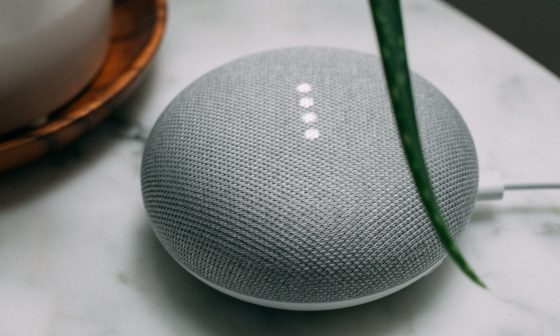I’m not gonna lie—all I’ve been hearing my friends say over the past few days is either “OK, Boomer” or “Okay, Google”. Everyone predicted voice search’s popularity to grow over the years, but nobody prepared me for the actual impact it was going to have in our day-to-day lives, and if you’re optimizing your brand for voice search, you will be left behind.
Let’s get down to brass tacks here. Three simple stats:
- 65% of 25-49 year-olds speak to their voice-enabled devices at least once per day in 2019
- The wearable tech industry is expected to grow from nearly $23 billion in 2018 to $54 billion by 2023
- Smart-speaker ownership has surged 36% to 53 million U.S. people (ages 18 and older) as of January 2019
In other words, as my colleague Bart so eloquently put a couple of weeks ago, “There is no going back”. Voice search is becoming a big part of our day-to-day lives. The default medium of interaction between humans and connected cars, smart speakers, or smartwatches is soon going to be voice—in fact, it kinda already is. Consumers are already (quite literally) asking their smart devices for directions to a store, where the best ramen in town is, or who to call when they need to get new upholstery for their furniture.
What does this mean for your brand?
Well, it’s pretty straightforward, isn’t it? Voice search is here to stay, and it’s high time for your brand to optimize for getting found on search results that Google Assistant, Alexa, Siri, or Cortana dish out to its users (AKA literally all of us). Now, this doesn’t mean that you have to completely rethink your brand’s SEO strategy. However, you definitely need to revisit your brand’s SEO checklist and see whether there are any gaps you need to fill.
Here are five things that you can start with to optimize your brand’s website for voice search.
#1 Establish a Well-Rounded Online Presence
Making sure that your website is listed on all major websites with rich and accurate information is absolutely the most important thing you need to do if you want to optimize your local business for voice search. Here’s why: voice assistants need a repository of information to pull data from when consumers ask a question—and where does that data come from? That’s right, it comes from business-discovery websites and other digital profiles connected to your brand.
Google Assistant fetches results from (you guessed it) Google My Business. Alexa extracts all the information it needs from Yelp. Siri uses Apple Maps Connect, Yelp, TripAdvisor, and a few other sources for this information. Cortana gets its facts from Bing Places and Yelp. You get the idea. (Source)
The point is this—not having profiles set up on these platforms and not having reliable, brand-controlled information here translates to you not being optimized for voice search. As voice search gains prominence, there’s no telling which data providers brands will want to integrate with. Building your brand’s online presence should be on the top of your to-do list if you’re optimizing your brand for local searches.
#2 Add Structured Data Markup to Your Website
Ah, local business schema. The wondrous unicorn that you still can’t find on most brand websites. Despite knowing the fact that Google, Bing, Yahoo! and Yandex collaborated to build this to make life easier for both webmasters and brands, adding structured data markup is something that several brands aren’t doing. I don’t know why. Maybe it’s not truly understanding the benefits of it or feeling like implementing it on websites is an arduous task. If that is the case, here’s a blog post explaining how brands can add local business schema to their website with ease.
Adding structured markup data to your website doesn’t only help your brand stand out on search engines (as pictured below), but also helps you control the data that search engines can extract from your website—in other words, allow the Google Assistants and Cortanas of the world to tell customers exactly what promotional offer your brand is running or the payment methods that you accept.
Building and optimizing your website schema is quite straightforward—you can use a schema generator tool to do this for your brand’s website in a matter of minutes.
#3 Decrease Your Website’s Average Page Load Time
Optimizing your website’s average page load time has been an SEO best-practice for years now, but this metric might just be more important than ever, now.
A study from Backlinko shows that the average TTFB (time to first byte) of a voice search result is just 0.54 seconds, as opposed to 2.1 seconds on the average desktop webpage.

This, coupled with the fact that the average page load time of voice search results is just 4.6 seconds (as compared to 8.8 seconds on desktop webpages) shows that your website’s page load time plays an instrumental role in improving your ranking on voice searches.

There are tools like Google’s PageSpeed Insights that can help you optimize your brand’s website for voice search by decreasing its page load time.
#4 Optimize for Long-Tail Keywords
Voice search queries are longer than traditional typed searches, which means to be voice optimized, you need to start optimizing your webpages and content for long-tail keywords, going forward. As long-time search engine users, we’re conditioned to string seemingly incoherent keywords together if we want to obtain search results (looking at you, guy sitting right next to me and typing “cybertruck ford f 150 tweet what”).
However, I don’t imagine we’d ever ask Siri these questions the same way. We talk to our voice assistants the same way we talk to other people, and this drastically changes the way these searches will be phrased. The voice assistant is going to use NLP (Natural Language Processing) to extract keywords and phrases from your voice search queries and fetch results that seem like a good fit.
This means that you’ve got to optimize your content and webpages to show up for phrases that customers would use when they run a voice search for you instead of text typed search. In other words, you need to start focusing on writing content that is optimized for long-tail keywords.
A great example of optimizing for a long tail keyword is, well, this very post! Instead of optimizing this post for “voice search optimization”, which is a) hard to rank for, and b) not a long-tail keyword, we’re trying to make it rank for “how to optimize for voice search”, which is probably what someone running a voice search would say (at least I know that’s what I’d say).
#5 Optimize for Position Zero
Voice assistants love to quote featured snippets when users ask them something. Don’t believe me? Take a look at what happens when I query “optimising for voice search” (my phone’s running on English-UK) on Google Assistant.

Yep. Featured snippet. I’m going to be honest with you here—the only reason I added that screenshot is because the featured snippet that’s showing up is from a guest blog that I wrote. Yes, I’m bragging right now.
The fact that Google is also trying to give webmasters and brands a chance to optimize better for featured snippets is proof that voice search is expected to gain even more prominence over the next few years. You can read more about how you can optimize for featured snippets in this post.
What Next?
While these 5 steps are bound to give your voice search optimization a boost, it doesn’t end here, of course. SEO is all about covering all the bases and following best practices on every front, and as we all know, an ever-changing field. What we do know for sure is that consumer search behavior is changing at a rapid pace, and as marketers, we need to keep up with the times.


